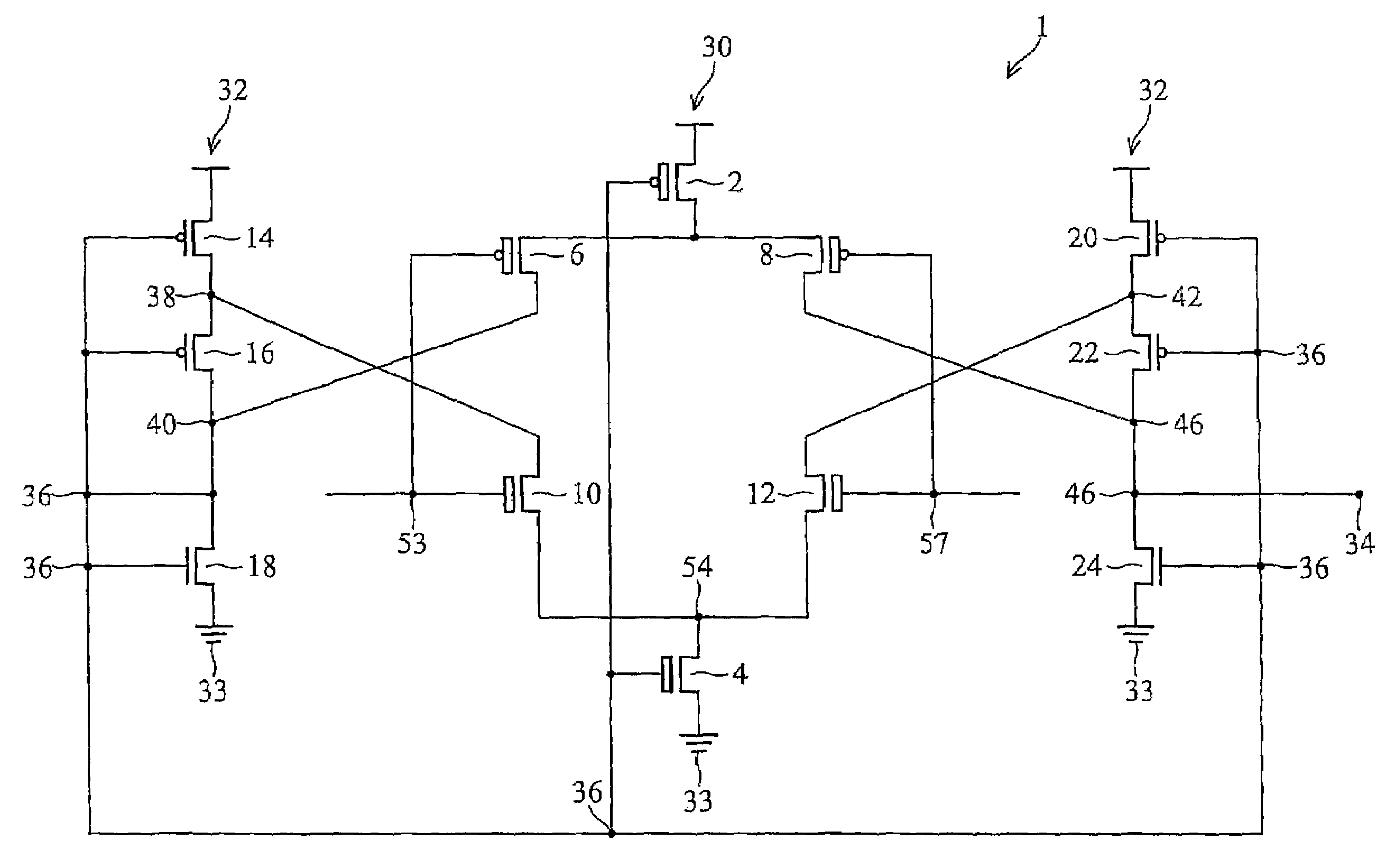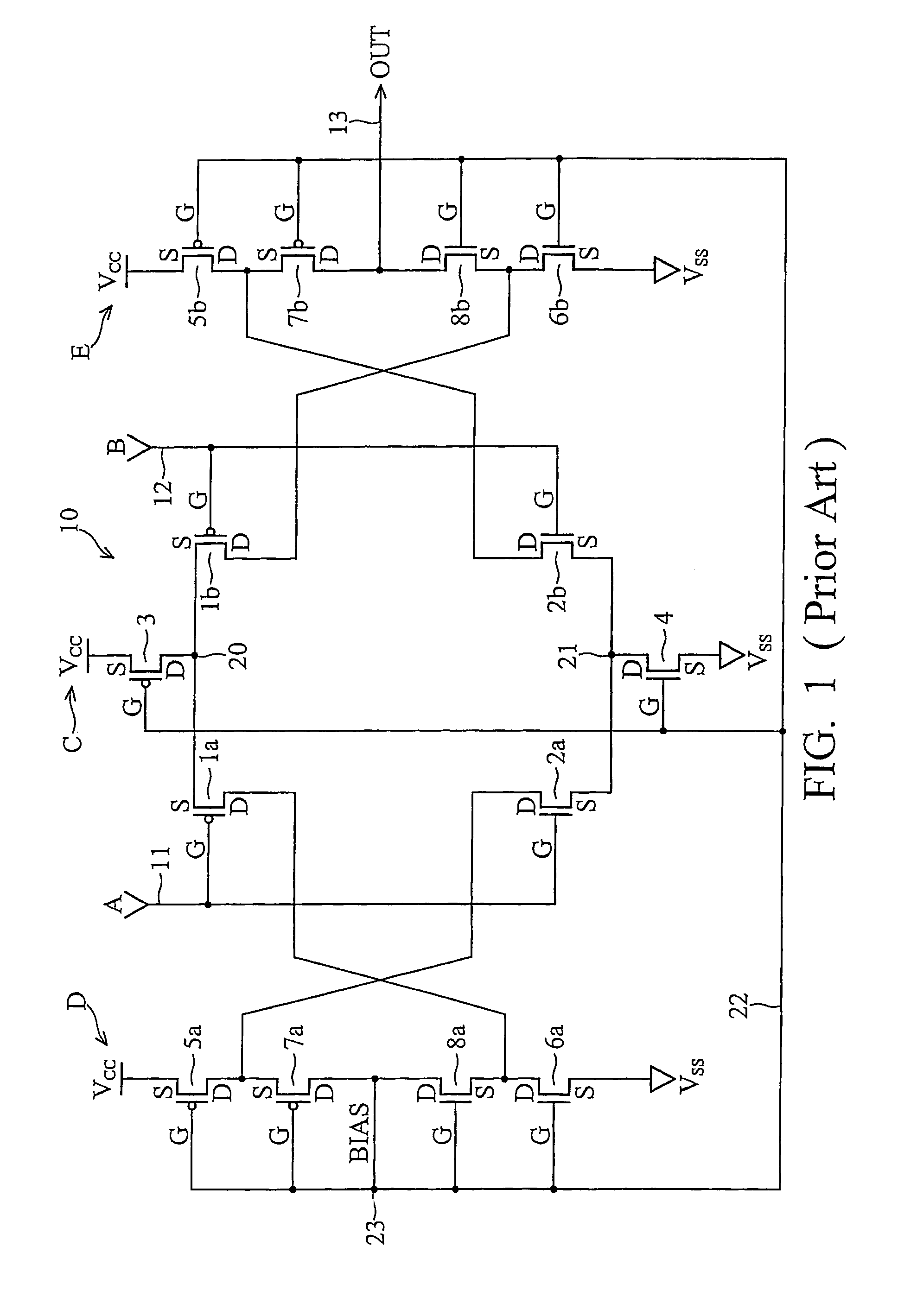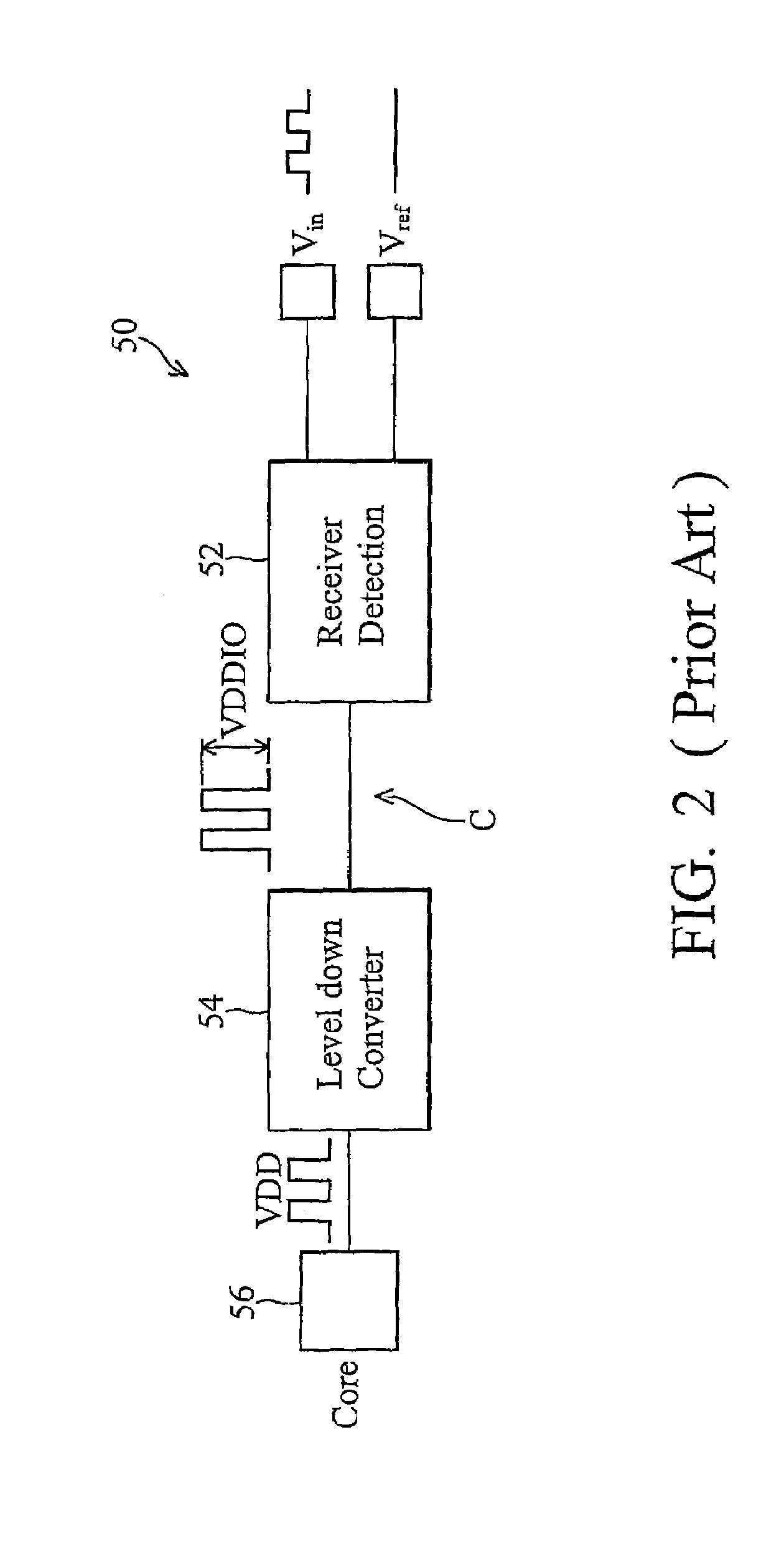Self-biased high-speed receiver
a receiver and high-speed technology, applied in the field ofmos integrated circuits, can solve problems such as circuit failure, core circuit damage or deformation, and circuit failure to work correctly, and achieve the effects of improving the response to high-speed io signals, stable bias voltage, and minimizing the number of devices working
- Summary
- Abstract
- Description
- Claims
- Application Information
AI Technical Summary
Benefits of technology
Problems solved by technology
Method used
Image
Examples
Embodiment Construction
[0017]The making and using of the presently preferred embodiments are discussed in detail below. It should be appreciated, however, that the present invention provides many applicable inventive concepts that can be embodied in a wide variety of specific contexts. The specific embodiments discussed are merely illustrative of specific ways to make and use the invention, and do not limit the scope of the invention.
[0018]A preferred embodiment of a self-biased high-speed receiver is described. A variation of the present invention will then be discussed.
[0019]FIG. 3 illustrates a block diagram of a first embodiment of the present invention. Compared to FIG. 2, it is noted that the IO signal detector 53 and the level-down converter 54 are integrated into one circuit 60 and the intermediate IO signal with amplitude of Vddio is removed. The output of the circuit 60 is provided to a core circuit 56 compatible signal with the amplitude of Vdd.
[0020]FIG. 4 illustrates a circuit schematic diagr...
PUM
 Login to View More
Login to View More Abstract
Description
Claims
Application Information
 Login to View More
Login to View More - R&D
- Intellectual Property
- Life Sciences
- Materials
- Tech Scout
- Unparalleled Data Quality
- Higher Quality Content
- 60% Fewer Hallucinations
Browse by: Latest US Patents, China's latest patents, Technical Efficacy Thesaurus, Application Domain, Technology Topic, Popular Technical Reports.
© 2025 PatSnap. All rights reserved.Legal|Privacy policy|Modern Slavery Act Transparency Statement|Sitemap|About US| Contact US: help@patsnap.com



